Wildlife of Uganda: five species to look out for
Spot these amazing animals in East Africa’s gem
With a wide variety of different habitats, including mountains, tropical rainforest, woodlands, grasslands, savannah and freshwater lakes, Uganda offers incredibly biodiverse flora and fauna. It is home to more than 345 species of mammal, 142 reptiles, numerous bird life and — despite being landlocked — 501 different types of fish.
Perhaps best known for its primates — including the famous mountain gorilla as well as chimpanzees, Uganda remains a firm-favourite for wildlife spotters who come to visit some of the ten national parks and thirteen wildlife reserves the country offers. Here’s what to look out for.
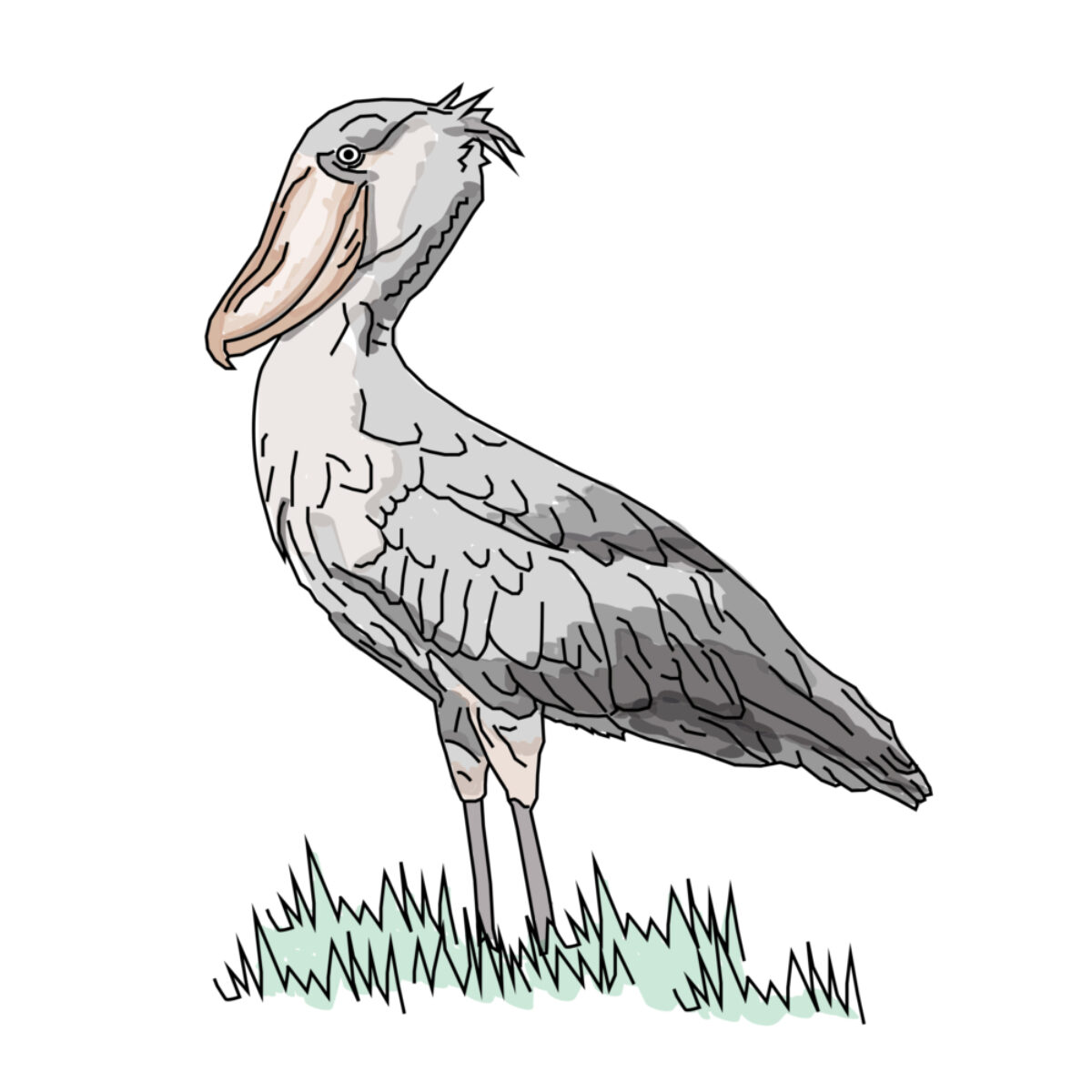
Shoebill stork
Also known as the whale-headed stork or whalehead, the shoebill stork is a large wading bird native to tropical East Africa. Reaching a height of 110-150cm, the species is named after its formidable round-shaped bill which it uses to catch lungfish, eels, lizards, frogs, turtles and even baby crocodiles.
While they move slowly when hunting their prey, sometimes standing completely motionless, their strike is quick and violent. Though normally a silent bird, they will perform “bill-clattering” displays during nesting season or when greeting other birds, which has been likened to the noise of machine gunfire.
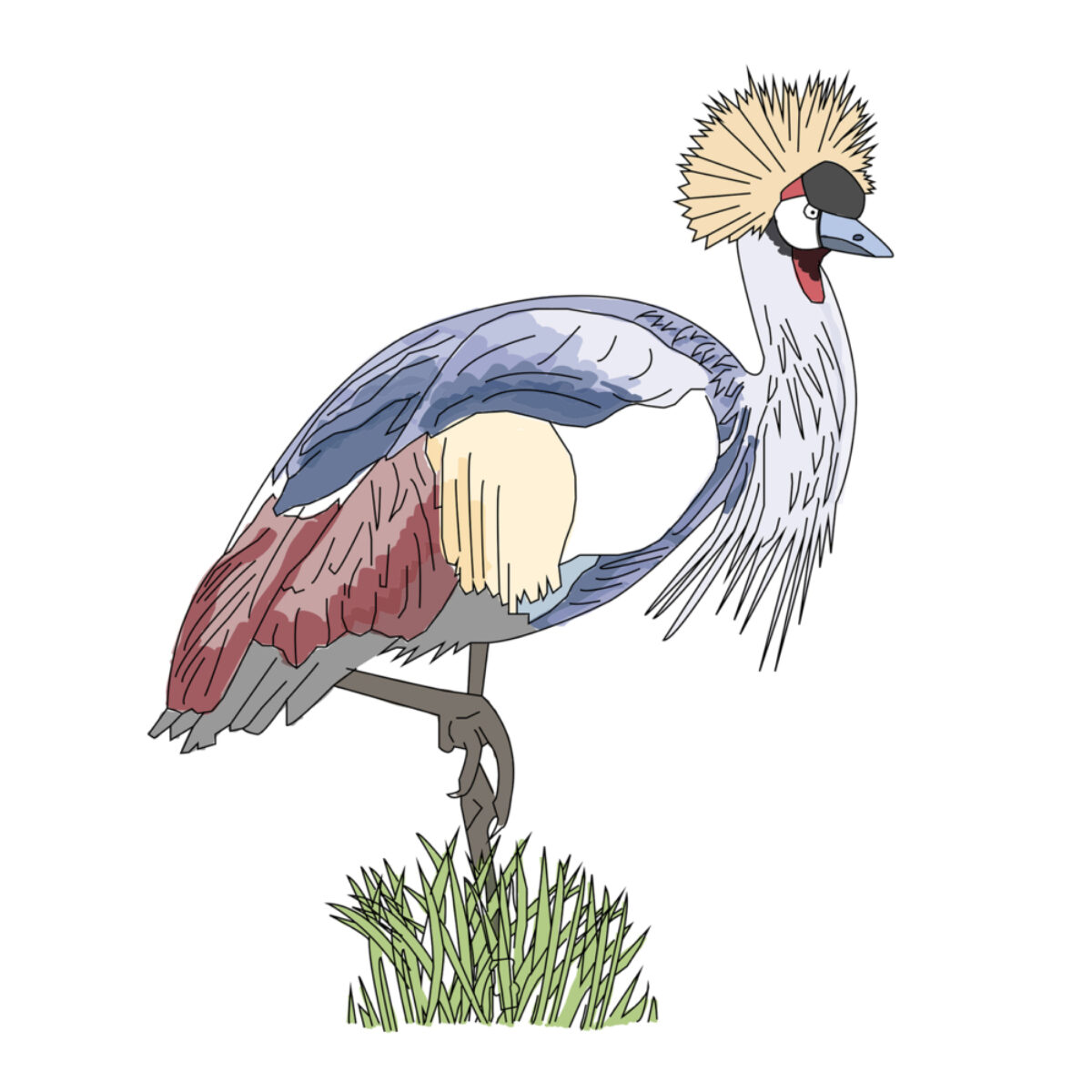
Grey crowned crane
Known as Uganda’s national bird, the grey crowned crane is native to both eastern and southern Africa and can be found anywhere from the dry savannah to the marshes and grassy flatlands surrounding the rivers and lakes of Uganda and Kenya.
Measuring up to 1m tall, these birds are known for their impressive mating displays, where both sexes will bow, jump and dance to impress their partner.
A recognised endangered species, the crane faces not only the threat of human disruption and habitat loss but also live capture and egg collection for commercial trade. Protected by law in Uganda, Kenya, Zimbabwe and South Africa, there are increasing efforts in place to monitor and protect the birds through establishing community-based wetland conservation and awareness campaigns.
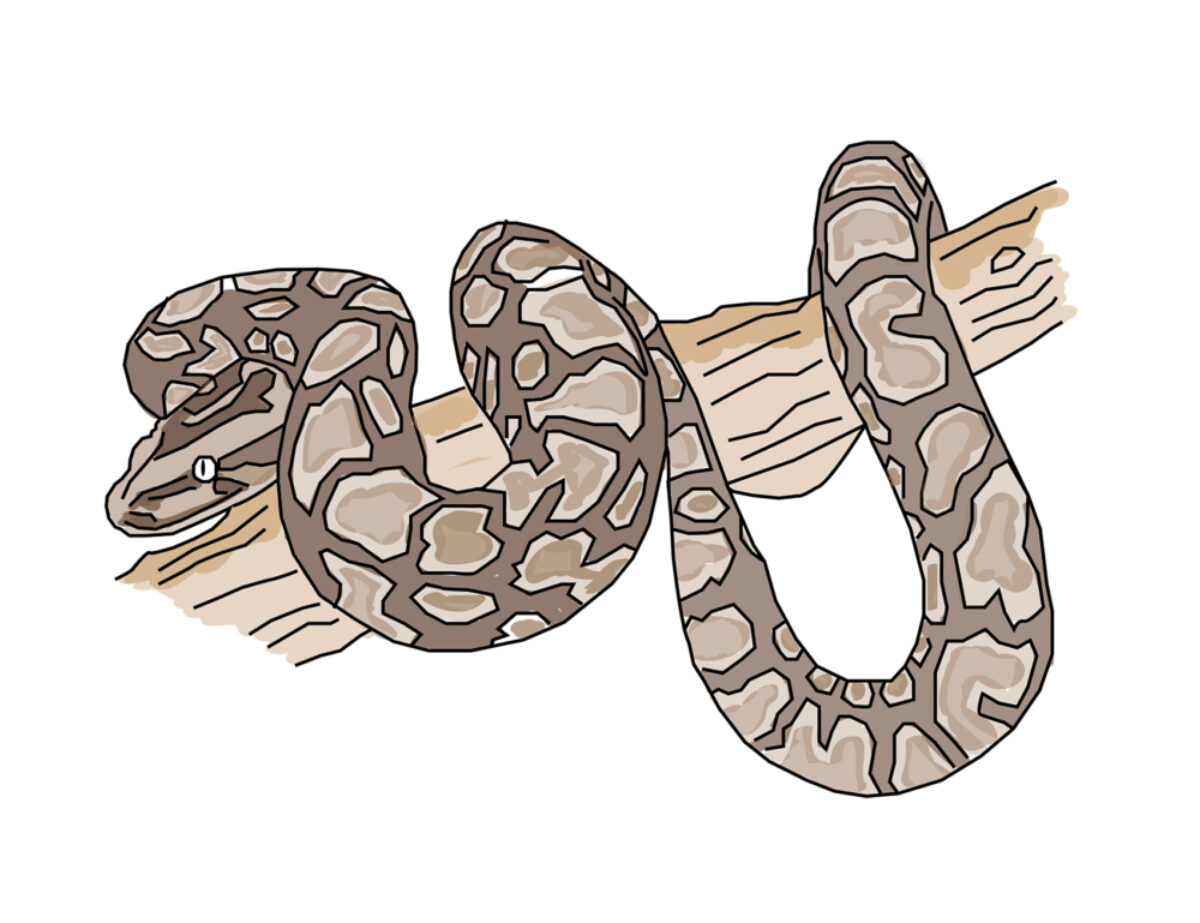
African rock python
Africa’s largest snake, the African rock python, is amongst the six largest snake species in the world, measuring up to 6m in length. Common across sub-Saharan Africa, it has two subspecies, with the larger of the two, the African rock python, found across central and western Africa, and its smaller relative (the southern African rock python) found in southern Africa.
It is widespread both in desert and forest, but prefers to be close to a source of water. Like all pythons, it is non-venomous and will kill through constriction, with prey ranging from rodents, monkeys, rats, fruit bats, lizards, warthogs, crocodiles and antelopes, to poultry, dogs and goats in more urban areas.
Although the African rock python isn’t considered endangered at present, it is often killed by fearful locals, collected for the pet trade, threatened by habitat destruction, and is increasingly targeted in the Congo Basin as a food source.
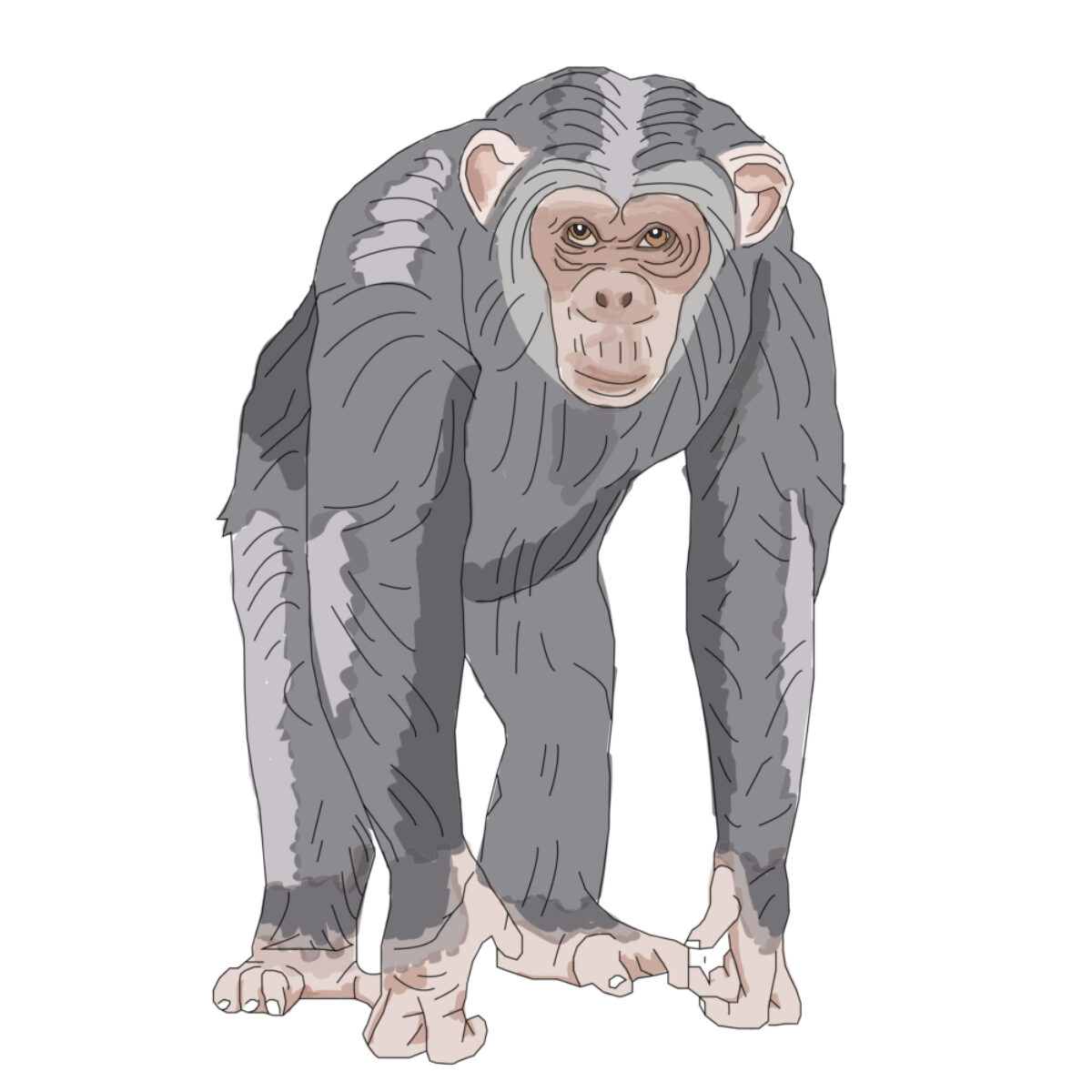
Chimpanzee
A species of great ape, the chimpanzee is native to tropical Africa and can be found anywhere from the high altitude rainforests to the dry grasslands of the savannah. Chimps share 98.7% of our genetic DNA and are intelligent, sociable and political. Chimpanzees live in strict hierarchies led by an alpha male in communities consisting of 20-150 members, but spend the majority of the time travelling in small groups or alone.
Interestingly, while chimpanzee society tends to be patriarchal, their relatives across the Congo Basin — bonobo apes — live in more female-centred societies.
The chimpanzee is considered endangered, with a population of over a million in the early 1900s now reduced to between 170,000-300,000. Threats include habitat destruction and poaching for bushmeat, medicinal purposes and the pet trade. A main cause of death is disease — because chimpanzees succumb to many of the same diseases which affect humans, our encroachment into their territory has led to diseases crossing over.
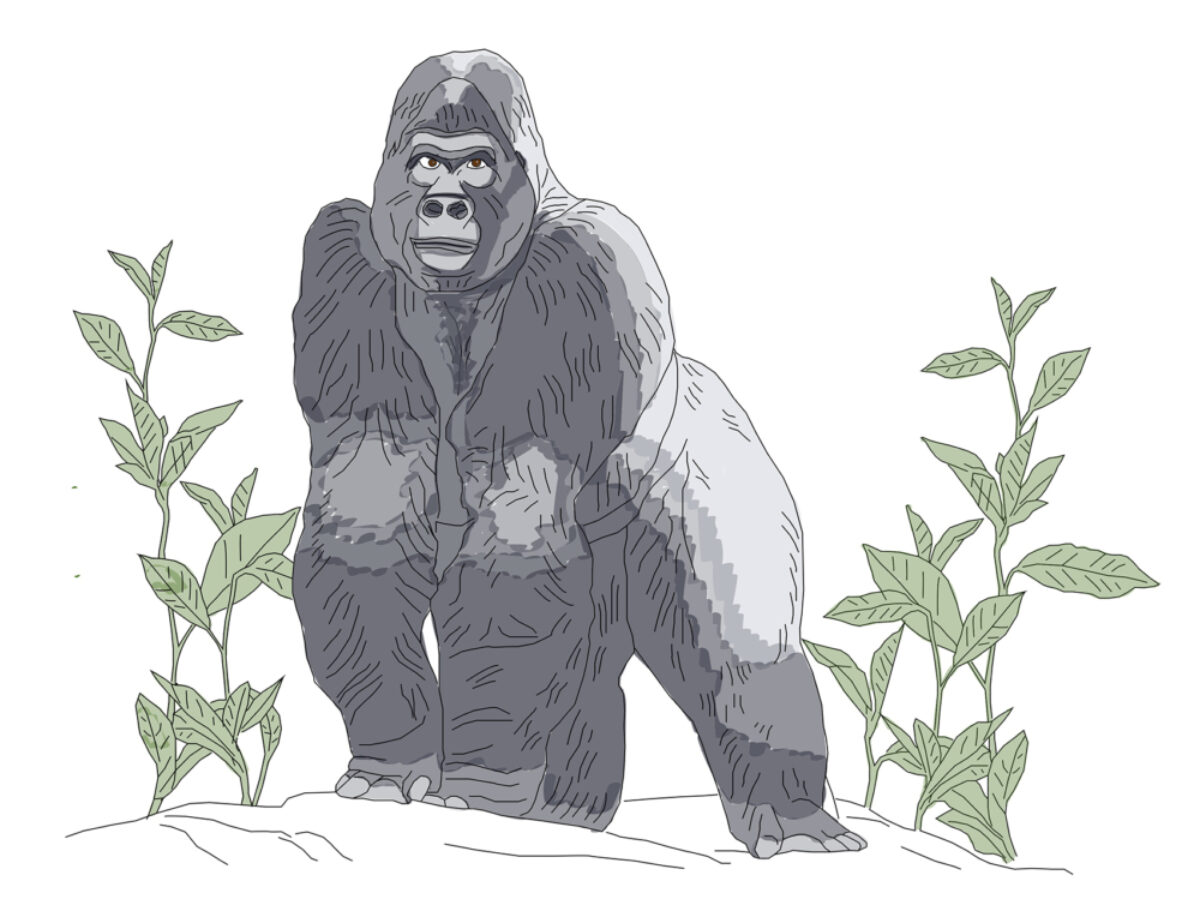
Mountain gorilla
There are only around 800-1000 mountain gorillas left in the world, separated into two main populations. One can be found in Uganda’s Bwindi Impenetrable National Park, and the other in the Virunga Mountains, which straddle three national parks — Mgahinga Gorilla National Park, Rwanda's Volcanoes National Park, and Virunga National Park in the Democratic Republic of Congo.
The mountain gorilla’s fur is thicker than other species of great apes, in order to deal with the freezing temperatures of the mountains. Highly social, they live in stable, closely-bonded, non-territorial groups led and protected by a dominant silverback who determines the group's movements and mediates conflicts.
Around 61% of these groups contain just one adult male, 36% contain more than one adult male, and the remaining tend to be all-male groups or solitary males. Group sizes can vary from 5-30 members, with an average of 10 members.
For unknown reasons, they seem to be afraid of certain insects, reptiles and of water, disliking rain and avoiding crossing streams — or using fallen logs to cross – wherever possible. Although conservation efforts have led to an increase in population size, the mountain gorilla remains endangered.




